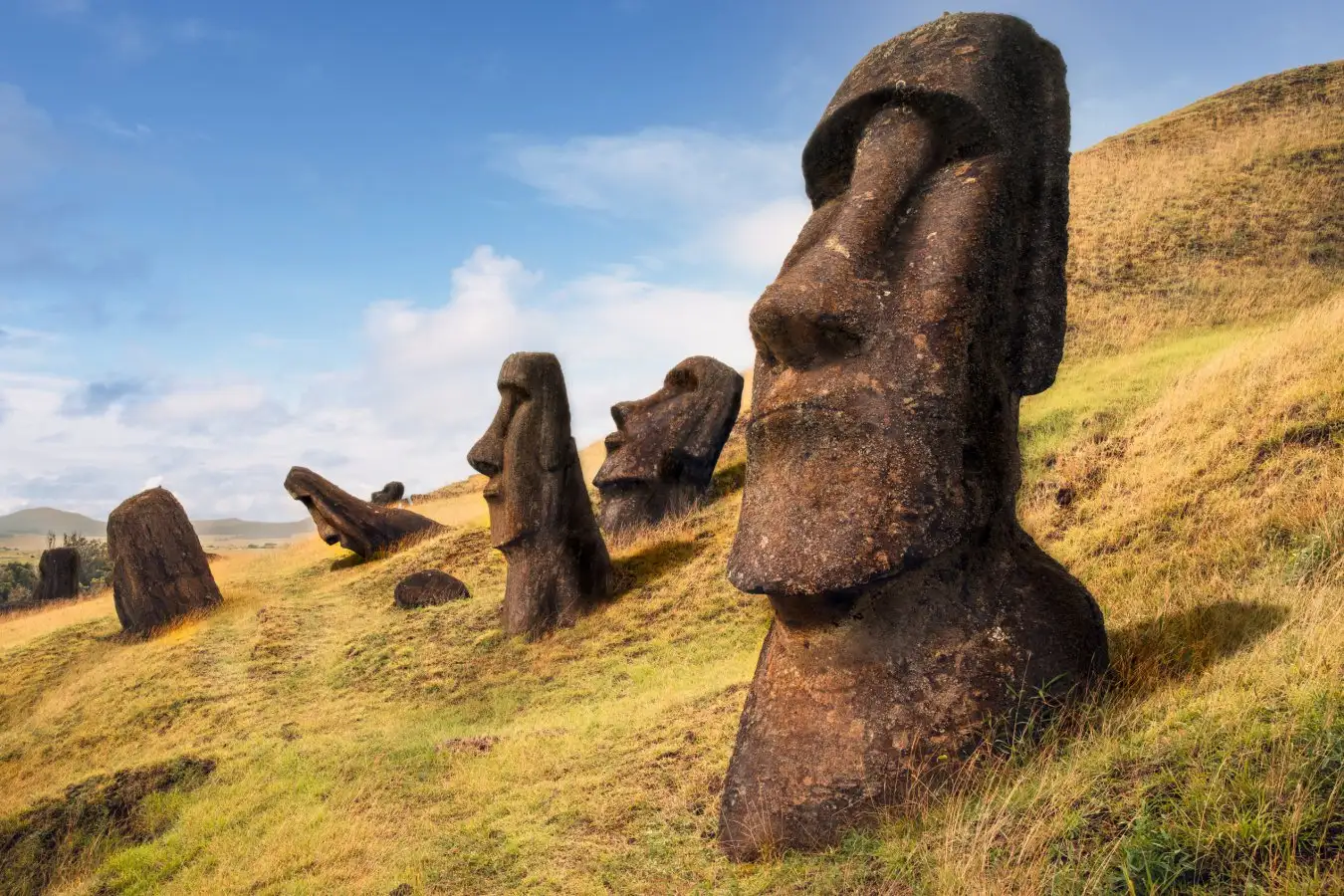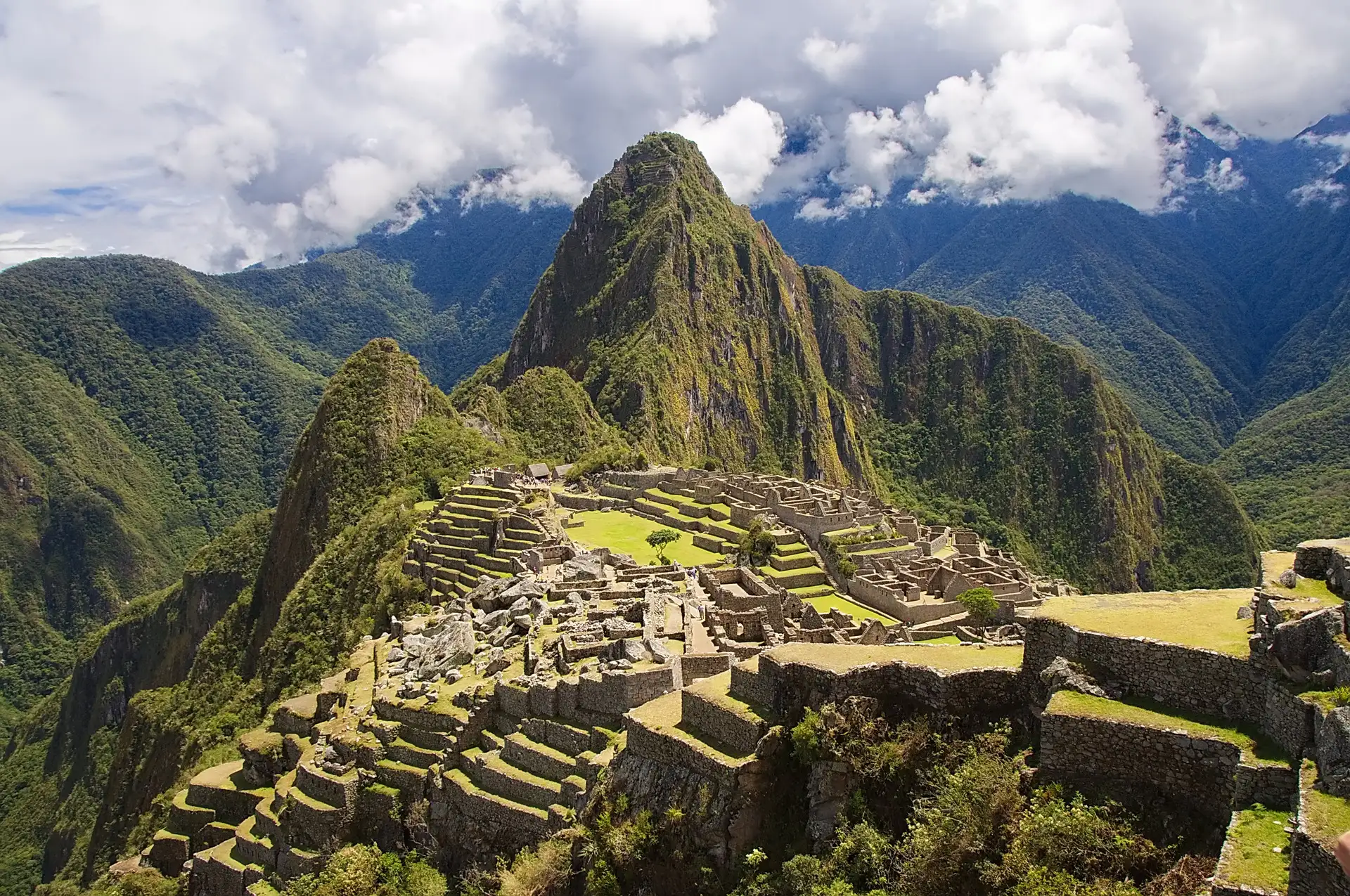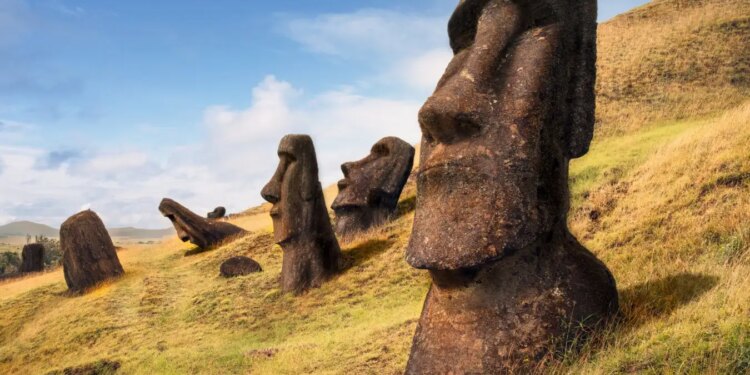
The moai statues on Easter Island
Maurizio De Mattei/Shutterstock
Easter Island’s monumental stone statues may have been created through a decentralised artistic and spiritual tradition, with many different communities making their own carved stone giants, rather than a unified effort coordinated by powerful rulers. That is the finding of an attempt to definitively map the island’s main stone quarry.
Also known as Rapa Nui, Easter Island, in the Pacific Ocean, is thought to have been inhabited by Polynesian seafarers since around AD 1200.
Archaeological evidence suggests that the Rapa Nui people were not politically unified, but there is debate over whether the hundreds of stone statues known as moai were coordinated by a centralised authority.
The island had only one quarry supplying the volcanic rock from which the statues were carved, a site called Rano Raraku.
Carl Lipo at Binghamton University in New York and his colleagues used drones and high-tech mapping equipment to create the first 3D map of the quarry, which contains many unfinished moai. Previous studies have come to varying conclusions about the number of moai that remain in the quarry, says Lipo.
Lipo and his colleagues recorded 426 features representing moai at various stages of completion, 341 trenches cut to outline blocks for carving, 133 quarried voids where statues were successfully removed, and five bollards that probably served as anchor points for lowering moai down slopes.
They also found the quarry was divided into 30 work areas that each appeared to be separate from the others and featured different carving techniques, says Lipo.
Combined with previous evidence showing that small crews could have moved the moai, and that groups marked out separate territories at freshwater sources, Lipo says it appears the statue carving was not the result of a centralised political authority.
“The monumentality represents competitive display between peer communities rather than top-down mobilisation,” he says.
There has been debate among historians about the supposed decline of the Rapa Nui people, with some claiming that overexploitation of resources led to a devastating societal collapse, but others question that narrative.
Lipo says the collapse story assumes centralised leaders drove the construction of the monuments and this led to deforestation and societal failure. “But if monumentality were decentralised, and that emerged from community-level competition rather than chiefly aggrandisement, then the island’s deforestation could not be blamed on megalomaniacal leadership,” says Lipo.
However, other researchers are not so sure this interpretation is correct. Dale Simpson at the University of Illinois Urbana-Champaign agrees there was not one overarching chief as there were in other Polynesian cultures such as Hawaii or Tonga. But, he says, the clans were not as separate and decentralised as Lipo and his colleagues have proposed, and there must have been collaboration between groups.
“I just wonder if they’re drinking a little too much Kool-Aid and not really thinking about the limitation factors on a small place like Rapa Nui where stone is king and if you’re not interacting and sharing that stone you can’t carve moai just inside one clan,” he says.
Jo Anne Van Tilburg at the University of California, Los Angeles, says further research is underway to clarify how the Rapa Nui people used Rano Raraku and Lipo’s team’s conclusions are “premature and overstated”.

Machu Picchu and the science of the Inca: Peru
Immerse yourself in the Inca civilisation’s most important archaeological sites, including visiting Machu Picchu twice as you discover how the story of the Inca is so much more than just one site.
Topics:
Source link : https://www.newscientist.com/article/2505945-easter-island-statues-may-have-been-built-by-small-independent-groups/?utm_campaign=RSS%7CNSNS&utm_source=NSNS&utm_medium=RSS&utm_content=home
Author :
Publish date : 2025-11-26 19:00:00
Copyright for syndicated content belongs to the linked Source.












